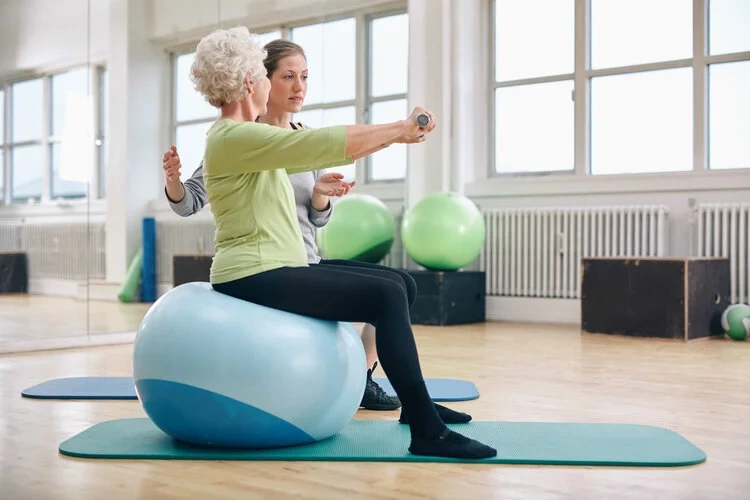Looking for a clear‑cut routine that actually helps keep the brain sharp? Just 30 minutes of movement, five days a week, can lower dementia risk – the Alzheimer’s Association says so, and the science backs it up.
Below you’ll find the easiest‑to‑follow workouts, why they work, safety tricks, and how to blend them with everyday life. No jargon, no fluff – just the info you need right now.
Why Exercise Helps
What does the research say?
Multiple large‑scale studies have confirmed that regular activity cuts the odds of developing dementia by roughly 30 % and up to 45 % for Alzheimer’s specifically. A meta‑analysis of 11 studies referenced by Parade notes this striking protective effect. The Alzheimer’s Association also highlights the “30‑minutes‑five‑times‑a‑week” rule as a simple, evidence‑based guideline.
How do workouts protect the brain?
When you move, your muscles release proteins called myokines. These travel to the brain and help keep neurons healthy – a process neurophysiologist Louisa Nicola describes as “exercise‑induced brain protection.” In addition, aerobic and resistance training stimulate blood flow, encourage new neural connections, and even enlarge the hippocampus, the region responsible for memory.
Can exercise act like a drug?
Think of it as a natural prescription. A recent internal piece Exercise drug Alzheimer’s explains how regular physical activity can complement medication, reduce reliance on some drugs, and improve overall quality of life. It’s not a magic pill, but it’s one of the safest, most affordable “medicine” we have.
What about muscle health?
Beyond the brain, muscle preservation matters too. A 2023 study in Scientific Reports showed that resistance training restored skeletal‑muscle satellite‑cell content in an Alzheimer’s‑animal model, suggesting that strength work may counteract the muscle loss often seen in dementia patients (source).
What are the cognitive benefits?
Regular movement has been linked to better attention, faster information processing, and a slower decline in everyday tasks. For a deeper dive, check out our article on cognitive benefits exercise, which breaks down the science in plain language.
Core Workouts
Early‑stage: Stay mentally active
When memory lapses are mild, aim for a mix of cardio and light resistance:
- 20‑minute brisk walk, focusing on counting steps or naming the colors of passing cars.
- 10‑minute seated band circuit: biceps curl, leg press, and seated row (use a light resistance band).
- Finish with 5 minutes of gentle stretching, holding each pose for 20 seconds.
Mid‑stage: Safe but effective
Safety becomes a priority, but you can still get a solid workout:
- PLIÉ‑style group moves – sit‑to‑stand, arm reach, and mindful breathing (often offered through community centers).
- Seated yoga or Tai Chi: 5 poses, 30 seconds each, performed slowly with deep breaths.
- Use a sturdy chair, keep the area clutter‑free, and have water nearby.
Late‑stage: Gentle motion matters
Even the smallest motions can improve mood and circulation:
- Chair‑rolling: slowly swivel the torso from side to side.
- Ankle circles – 10 clockwise, 10 counter‑clockwise.
- Hand‑clap rhythms to a favorite song (helps with auditory processing).
- If possible, assisted standing with a support bar for heel raises and knee straightens.
Everyday chores as exercise
Turning routine tasks into mini‑workouts is a genius hack:
- While folding laundry, raise arms overhead every 10 seconds.
- During dishwashing, place a light weight on one ankle and do heel raises.
- Gardening: squat‑to‑stand when planting bulbs, then stretch arms to reach for tools.
Sample Weekly Schedule
| Day | Morning (10 min) | Mid‑day (15 min) | Evening (5 min) |
|---|---|---|---|
| Mon | Brisk walk (outside) | Seated band circuit | Hand‑clap rhythm |
| Tue | PLIÉ group (online) | Garden squat‑to‑stand | Ankle circles |
| Wed | Chair yoga | Light housework “mini‑sets” | Deep breathing |
| Thu | Walk + count colors | Seated Tai Chi | Hand‑clap rhythm |
| Fri | Resistance band rows | Gardening weeds | Heel raises |
| Sat | Family stroll | Guided meditation + gentle stretch | Ankle circles |
| Sun | Rest or light stretching | Social activity (music, memory games) | Quiet breathing |
Balancing Benefits & Risks
Is there a danger of falls?
Yes, especially when balance is compromised. Always clear the exercise area of rugs and cords, use a sturdy chair with arms, and consider a non‑slip mat. The BetterHealth Victoria fact sheet recommends a quick “fall‑risk checklist” before each session: stable footwear, proper lighting, and a nearby support person if needed.
What if fatigue shows up?
Listen to the body. The “talk test” works well: you should be able to hold a conversation while moving. If talking becomes a struggle, dial back intensity or break the session into shorter chunks. Low‑impact alternatives such as water aerobics or gentle seated pilates are great substitutes.
Can too much exercise hurt?
More isn’t always better. The 30‑minute‑five‑times‑a‑week recommendation is based on diminishing returns beyond that point and a higher risk of overuse injuries. Stick to the schedule, stay hydrated, and let a health professional guide any major changes.
Do I need special equipment?
Not at all. A sturdy chair, a light resistance band, and comfortable shoes are enough to begin. If you have access to a community center, consider a set of light dumbbells (1–2 kg) for added variety.
How to Get Started
Ready to turn intention into action? Follow these five steps and you’ll have a sustainable routine in no time.
- Medical check‑up – Ask a doctor or physiotherapist to confirm which movements are safe given current health conditions.
- Build a starter kit – Grab a sturdy chair, a resistance band, and a pair of supportive shoes.
- Pick a simple template – Use the weekly schedule above, but feel free to swap days that suit your lifestyle.
- Set reminders – Phone alarms, calendar blocks, or sticky notes on the fridge keep you accountable.
- Track progress – A one‑page log (date, activity, minutes, how you felt) helps you see patterns and stay motivated.
For an easy printable version of the starter kit, download the PDF at the end of this article.
Real‑World Stories
A caregiver’s breakthrough
Mrs. Lee, 78, was diagnosed with mild dementia two years ago. Her daughter started a 20‑minute evening walk followed by five minutes of seated arm raises. Within six weeks, Mrs. Lee’s agitation scores dropped by 30 % and she began chatting about the garden again. “I felt like we finally had a connection,” her daughter says, “instead of watching her drift away.”
PLIÉ pilot participant
Samuel, 84, joined a local PLIÉ group after his neurologist suggested “movement for the mind.” After three months, he reported “feeling steadier on his feet” and his caregiver noted a brighter mood during meals. The program’s blend of procedural memory training and social interaction was the key, according to the study’s lead researcher.
Senior‑center success
A community center introduced the “10 seated exercises” routine from Our Parents. Attendance rose 30 % and participants reported a noticeable lift in energy after each session. The simple “alternate hand rotations” and “ankle circles” became a daily ritual that sparked conversation and laughter among the group.
Quick FAQs
How much exercise is enough?
About 30 minutes of moderate activity five times a week is the sweet spot, as confirmed by the Alzheimer’s Association.
Can resistance training help someone already diagnosed?
Yes – studies show it can improve muscle mass, satellite‑cell content, and even slow cognitive decline.
Is yoga safe for late‑stage dementia?
Gentle seated yoga, performed slowly with a sturdy chair, is safe and can improve mood and flexibility.
Do I need expensive equipment?
No. A sturdy chair, a light band, and comfortable shoes are enough to get started.
When should I stop a session?
If dizziness, pain, or extreme fatigue occurs, pause immediately and consult a healthcare professional.
Trusted Resources & Next Steps
Explore these related reads for deeper insight:
- cognitive benefits exercise
- Exercise drug Alzheimer’s
- Alzheimer’s treatment alternatives
- exercise mimic drugs
Remember, movement is a conversation between your body and brain. It doesn’t have to be perfect, just consistent. Start small, celebrate every win, and let the routine become a cherished part of your day.
Ready to take the first step? Grab the free starter checklist below, set a reminder, and watch how a few minutes of motion can brighten both mind and mood.


















Leave a Reply
You must be logged in to post a comment.